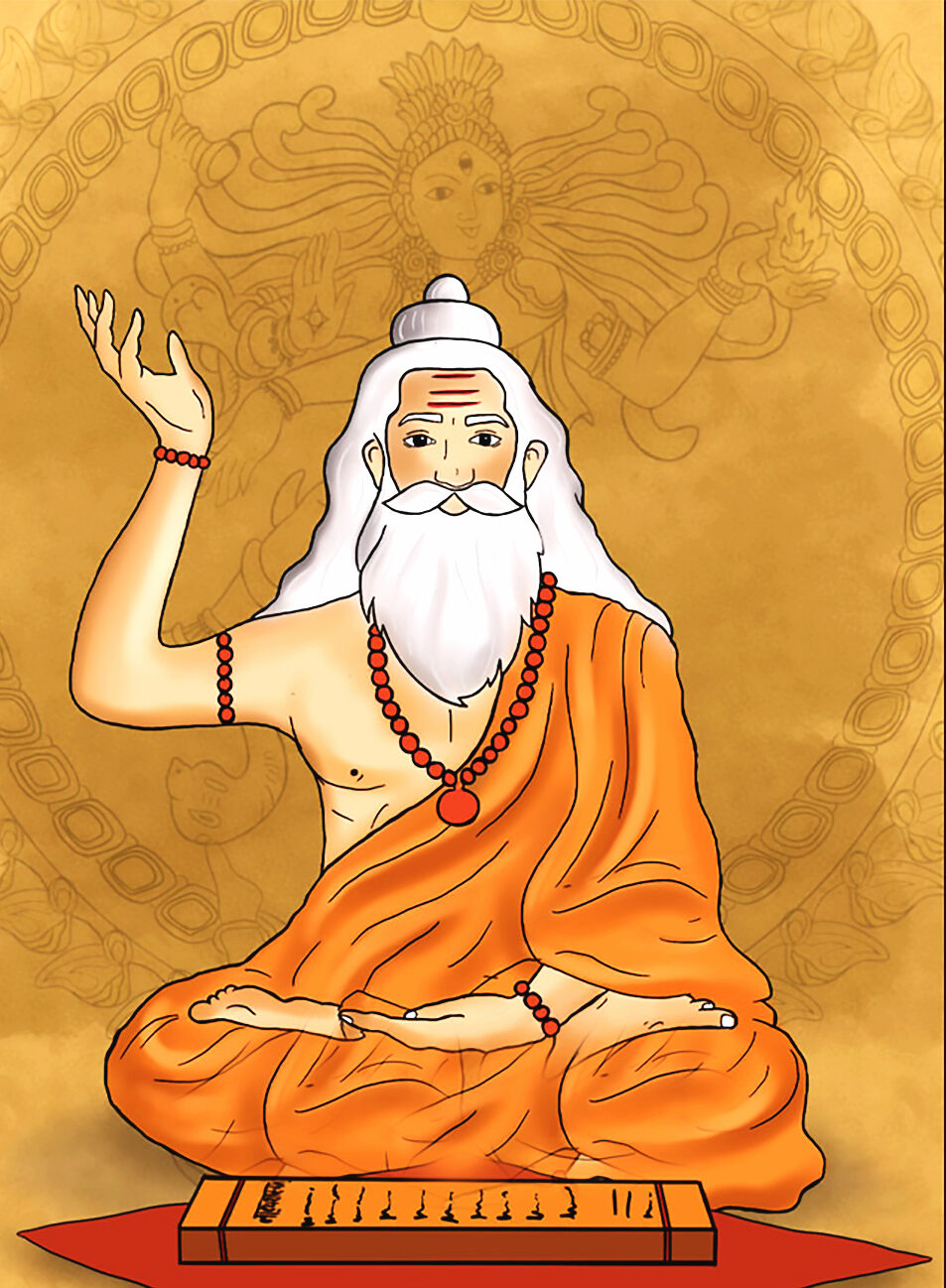The term Shastra means, order or direct. That is to say, it is the methodology that keeps everything which comes in its purview under control. This does not mean that it is rigid or restrictive, rather it provides a systematic approach and answers to every possible question that arises in one’s mind. As these answers are also inspired and in conjunction with the natural laws of life, it makes it applicable irrespective of time. One such timeless classic hailed as a “Veda” took birth to overcome the effects of mundane worldly affairs and which is accessible to everyone and also entertaining, providing moral values too was Natyaveda which was later systematised into Natyasastra. The credit of formulating this “Veda” which has the essence of all the four Vedas goes to Brahma. It was Sage Bharata Muni who endlessly worked on this and systematised it into a Shastra two thousand years ago and is in vogue till date.
The Natyasastra is a comprehensive work of all the elements that are needed for one to stage a successful theatrical production. One of the verses in the shastra says “There is no knowledge (Jnana), craft (Shilpa), science (Vidya), art (Kala), yoga or action (Karma) that does not fall within the purview of Performing Arts”. This says about the depth of this humongous work. Also, then, poetry, dance, music, sculpture, architecture etc were considered as an integral part of an art rather than separate streams. This is the reason why Natyasastra addresses everything under the umbrella of performing arts which makes it one of the best works.
Natya, often misinterpreted as dance actually means ‘theatre’ that comprises music, dance and acting. How the natya needs to be presented is discussed in the 36 chapters of Natyashastra which has about 6000 verses. Right from the consecration, the theatre architecture, the offerings to the divine, followed by the bodily movements which are supported by the musical interpretations and the costumes to be worn. The important aspect of Bhava and Rasa which is the emotion and the aesthetics is the major focus in this work. The kind of music and lyrics that needs to be used appropriately is also mentioned. This work not just discusses from the artist’s point of view for the presentation but also talks about the prerequisites to be a spectator which is an important aspect for the success of the presentation. This harmonious combination of all the essential components is the comprehensive framework of Natyaveda. The divine impact of understanding this sastra is also mentioned in the concluding verse of Natya Shastra which says “He who hears the reading of this shastra which is auspicious and comes from the mouth of brahman will be free from sins and one who puts it in to practise will attain the blessed goal which, Masters of Vedic knowledge and performers of Yagna attain”.
With the passage of time though the classical art forms developed into separate entities which are the minor forms of drama, the source of reference for all these entities is Nataysastra, even today. Few Sanskrit theatre presentations even now are the true representation of this Shastra. It is important to remember that Natya is a reflection of society and that is the reason it is necessary for an artist to study the human habits and nature around him. Hence, the world we live in becomes an authoritative source of knowledge as Bharata himself says. Having known the world, the background of Shastra and Sampradaya becomes important in presenting the classical art forms which otherwise loses its essence. -By Rashmi Thaper, Rashmi Thaper is an Auckland based Bharatanatyam Artiste



